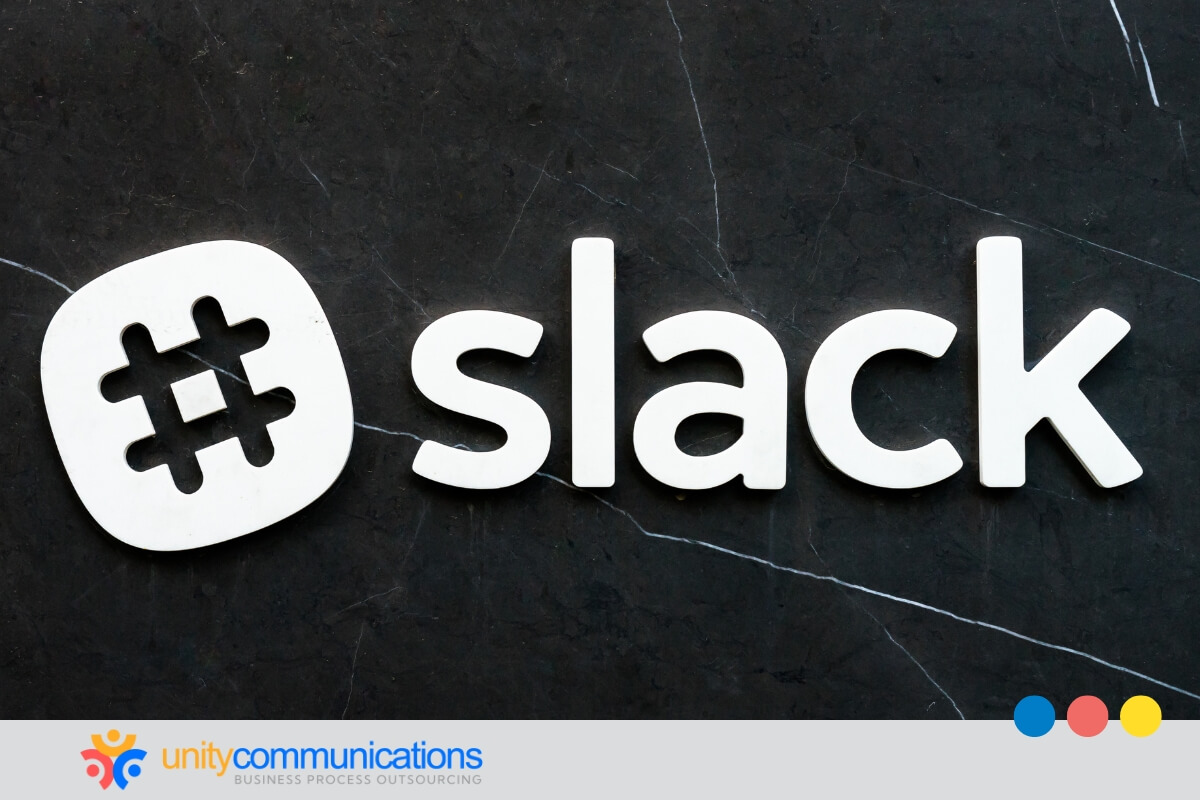Table of Contents
Remote work outsourcing is a viable strategy for streamlining operations, reducing costs, and accessing global talent. The right tools make it even more effective in enhancing business performance.
Project management, communication, and automation platforms optimize workflows, enhance collaboration, and boost productivity. In this article, you will learn about the most effective remote work outsourcing tools. Keep reading to discover how you can maximize business process outsourcing (BPO)!
Why the right tools matter in remote work outsourcing

Managing remote operations without the right tools is possible but painfully inefficient. After all, effective outsourcing depends on seamless communication, smooth collaboration, and streamlined workflows.
Without the right technology, projects can get lost in translation, deadlines slip, and productivity suffers. Statista reported in 2022 that 24% of remote workers saw decreased productivity compared to the previous year, highlighting the challenges businesses face in maintaining performance in remote operations.
The right tools bridge the gap between in-house teams and outsourced professionals, ensuring clarity, accountability, and efficiency. Reliable communication platforms keep conversations flowing, project management systems help monitor tasks and deadlines, and time-tracking and payment solutions ensure fair compensation and transparency.
Beyond efficiency, these tools complement what BPO solutions offter. Investing in the right technology is not just about getting work done—it’s about optimizing performance, improving collaboration, maximizing the strategy, and setting your business up for long-term success.
Effective remote work outsourcing tools
Now that you understand the importance of the right tools, let’s explore the different types that power remote work outsourcing.
Project management tools for streamlined task coordination
Project management tools help businesses organize tasks, assign responsibilities, and track project progress. They provide a centralized workspace where teams can collaborate, set deadlines, and monitor productivity. With features such as task prioritization, status updates, and workflow automation, these platforms ensure that remote projects stay on track.
Some of the best project management tools include:
- Asana: ideal for task tracking, workflow automation, and team collaboration
- Trello: uses a visual board system for organizing tasks and managing deadlines
- ClickUp: offers customizable dashboards, document sharing, and goal tracking
Communication tools for effective team collaboration
Clear and efficient communication is essential for remote work outsourcing. The right tools facilitate instant messaging, video calls, and asynchronous updates, ensuring teams stay connected regardless of location. Strong communication tools prevent misunderstandings and promote collaboration.
Popular communication tools for remote teams include:
- Slack: a messaging platform with organized channels for team discussions; used by 77 of Fortune 100 companies
- Microsoft Teams: combines chat, video conferencing, and document collaboration
- Google Chat: integrated with Google Workspace for seamless team communication
Time-tracking and productivity-monitoring solutions
Tracking work hours and monitoring productivity is crucial for remote teams. Time-tracking tools help businesses measure efficiency, manage billable hours, and ensure fair compensation for outsourced workers. These platforms also provide insights into workflow bottlenecks and areas for improvement.
Top time-tracking and productivity-monitoring tools include:
- Time Doctor: tracks work hours, screenshots, and activity levels
- Hubstaff: offers automated time tracking with GPS location tracking
- Toggl Track: provides detailed reports on time spent on tasks and projects
File sharing and cloud storage platforms for secure data access
Remote teams need reliable file-sharing and cloud storage solutions to access important documents securely. These platforms allow real-time collaboration, version control, and easy file retrieval from any location.
Leading file-sharing and cloud storage solutions include:
- Google Drive: provides cloud storage with real-time collaboration on documents
- Dropbox: offers secure file sharing and automatic backups
- OneDrive: integrated with Microsoft 365 for seamless document access
Security tools for protecting sensitive business information
Data security is a top concern for remote work outsourcing. Security tools protect sensitive information, prevent cyber threats, and ensure compliance with data privacy regulations. Businesses must invest in robust security solutions to safeguard their remote teams and operations.
Essential security tools include:
- NordVPN: encrypts internet connections to protect data from cyber threats
- LastPass: a password manager for securely storing login credentials
- Bitdefender: provides advanced antivirus and endpoint protection
Virtual meeting and video conferencing software for remote teams
Virtual meetings help maintain strong connections within remote teams. Video conferencing tools enable real-time discussions, team check-ins, and client presentations. These platforms often offer screen sharing, recording, and breakout rooms to enhance engagement.
However, virtual meetings come with challenges. In 2021, 58% of respondents from a global survey indicated that technical or software issues were among the biggest challenges of virtual conferences. This highlights the need for businesses to invest in reliable and user-friendly video conferencing tools to minimize disruptions and enhance productivity.
Best virtual meeting tools include:
- Zoom: a widely used platform for high-quality video calls and webinars
- Google Meet: integrated with Google Workspace for easy video conferencing
- Cisco Webex: provides secure video meetings with artificial intelligence (AI)-powered features
Automation tools to simplify outsourcing workflows
Automation tools help businesses eliminate repetitive tasks, improve efficiency, and reduce manual work. By automating processes such as email responses, invoicing, and project updates, remote teams can focus on high-value tasks.
Recommended automation tools include:
- Zapier: connects different apps and automates workflows
- Automate.io: enables integrations between multiple business tools
- ActiveCampaign: automates marketing and customer engagement processes
Integrating multiple tools for a seamless remote work setup
You and your BPO vendor may rely on multiple solutions to manage operations. But without effective integration, remote work outsourcing tools can create inefficiencies and workflow disruptions. A seamless remote work setup requires interconnected platforms for smooth data sharing, real-time collaboration, and process automation.
Integrated systems ensure that teams can access information without switching between multiple applications. For example:
- Syncing project management and time tracking tools. Connecting platforms like Asana with time-tracking software ensures accurate billing and productivity tracking.
- Linking communication and file storage solutions. Integrating chat tools with cloud storage allows team members to instantly share and access files.
- Automating workflows across apps. Automation tools like Zapier can connect customer relationship management (CRM) software, email platforms, and invoicing systems, reducing manual work.
Tips for selecting the right tools based on business needs

Choosing the right tools for remote work outsourcing is crucial for efficiency, security, and collaboration. With so many options available, businesses and BPO organizations must select solutions that align with their specific needs and workflows.
Here are key tips to guide your selection process:
- Identify business priorities. Determine the core challenges your remote team faces, such as communication gaps, project tracking, or security concerns. Choose tools that directly address these issues.
- Consider scalability. Select effective remote work outsourcing tools that can grow with your business. Scalable solutions prevent the need for frequent migrations and ensure long-term efficiency.
- Prioritize user-friendliness. A tool is only effective if your team can use it efficiently. Look for intuitive platforms with minimal learning curves to improve adoption and productivity.
- Ensure integration capabilities. Opt for tools that integrate with your existing software stack. Seamless connections between project management, communication, and automation tools enhance workflow efficiency.
- Focus on security features. Protect sensitive data by selecting tools with encryption, access controls, and compliance with industry security standards.
- Evaluate customer support and reliability. Choose tools with responsive customer support and high uptime reliability to avoid disruptions in your workflow.
- Test before committing. Take advantage of free trials or demo versions to assess how well a tool fits your team’s needs before making a financial commitment.
Future trends in remote work tools
As remote work continues to evolve, several key trends are shaping the tools and technologies that support distributed teams and operations:
Advanced collaboration technologies
Advancements in collaboration technologies will heavily influence the future of remote work. Virtual and augmented reality tools will play a significant role in creating immersive remote meetings and collaborative workspaces. These technologies aim to bridge the gap between physical and virtual environments.
AI and automation integration
AI and automation will increasingly support remote workers by handling routine tasks and enhancing productivity. AI-powered virtual assistants may become commonplace, assisting with scheduling, data analysis, and even basic decision-making processes.
Enhanced cybersecurity measures
As remote work becomes more prevalent, cybersecurity will remain a top priority for organizations. In 2024, cybercrime was predicted to have cost the world $9.5 trillion. This highlights the critical need for robust security measures moving forward.
Companies invest heavily in secure remote access technologies, advanced encryption methods, and comprehensive employee training programs to protect sensitive data. Implementing these measures is essential to safeguard against the increasing frequency and sophistication of cyber threats in the remote work environment.
Global talent pools and borderless hiring
Remote work will continue to break down geographical barriers in hiring. Companies will increasingly tap into global talent pools, leading to more diverse workforces. This trend may spark discussions around international labor laws and compensation structures for remote workers across different countries.
The bottom line

The right tools are essential for successful remote work outsourcing. From project management and communication to security and automation, these solutions streamline workflows, enhance collaboration, and boost efficiency. Businesses that invest in integrated, scalable, and secure tools will gain a competitive edge in the evolving remote work landscape.
Equipping your outsourced workforce with the best tools enhances productivity, improves operational transparency, and fosters stronger team engagement. If you want to optimize your outsourcing strategy and implement the right technologies for your business, let’s connect!




